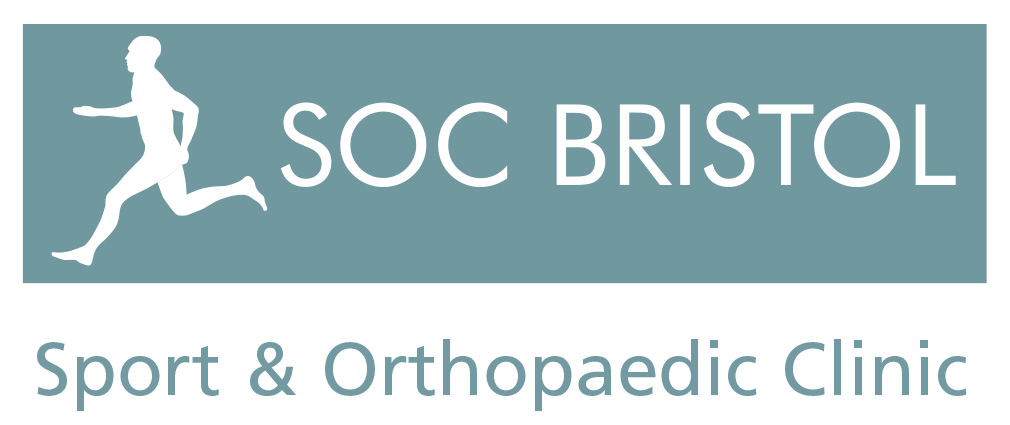Chronic Acromio-Clavicular Joint (ACJ) Stabilisation
Indication for surgery:
The indication for AC joint stabilisation is current or anticipated future symptomatic impairment of shoulder function or pain as a consequence of an AC Joint dislocation.
Acute stabilisation is generally considered to be within 2-3 weeks of the injury and may involve reduction and stabilisation of the AC Joint allowing the Coraco-Clavicular ligaments to heal or scar at the appropriate length.
Stabilisation of a chronic injury (beyond a few weeks) typically involves a reconstructive procedure, where ligaments or tendons are transferred from elsewhere to reconstruct the Coraco-Clavicular ligaments. This is sometimes termed a Weaver-Dunn procedure after one of the early techniques described. There are a wide variety of techniques for undertaking a chronic ACJ reconstruction. The following technique is a modification of the Weaver -Dunn using a TightropeTM as reduction device and temporary stabiliser and a hamstring tendon from the leg as a graft.
Anaesthetic:
Surgery is typically undertaken as a day-case procedure, that is you come into hospital and are discharged the same day. If the surgery is undertaken in the afternoon or evening then you may wish to stay in over night and go home first thing the next morning.
The operation is undertaken with a general anaesthetic often with an interscalene nerve block, that is you are fully asleep with further pain relief from a local anaesthetic injection above the Clavicle (Collarbone) block. The block typically results in arm numbness and pain relief for 12 to 48 hours following the operation.
Incisions:
A small three to four centimetre incision over the end of the Clavicle (Collarbone) and a small two to three incision incision on the inside of the leg just below the knee.
Procedure:
A small incision is made over the end of the Clavicle (Collarbone). The end centimetre of the clavicle is removed to reduce pain from the damaged AC Joint once it is reduced. The top of the clavicle is exposed and a small hole made through it. The top of the coracoid can be readily identified and exposed without extensive tissue clearance. A drill hole is made through coracoid with appropriate care. A TightropesTM can then be pulled through the Clavicle and the Coracoid button pushed through Coracoid drill hole at which point the button will ‘flip’ spontaneously securing the TightropeTM to both the Clavicle and Coracoid. The Tightrope can then be tightened to the appropriate length to reduce and stabilise the AC Joint.
A small two to three centimetre incision is made on the inside of the leg just below the knee. Through this hole one or two Hamstring tendons are harvested. The tendon is then passed under the Coracoid and through a further drill hole in the Clavicle before being secured.
The Coraco-Clavicular ligament lies between the Coarcoid and the Acromion. It is not normally involved in the stabilisation of the AC Joint. The ligament may be released from the Acromion and redirected upwards to the Clavicle to which it can be attached to act as an AC Joint stabiliser.
Wound Closure:
Arthroscopic wounds are typically closed using SteriStripsTM, small butterfly paper stitches, but a single absorbable stitch may be used which does not require removal. These wounds are then typically covered by a number of OpsiteTM dressings.
A mini-open incision is typically closed with an absorbable stitch that does not require removal. Occasionally the ends of this suture need to be trimmed when the dressing is removed at 10 to 14 days. The wound is then usually covered with a number of SteriStripsTM to protect the wound and minimise scarring. The wound is then covered by an OpsiteTM dressing
Following surgery:
The arm is typically placed in a sling, which is worn for three to four weeks. It is important to follow the rehabilitation protocols for AC Joint stabilistion supervised by a physiotherapist.
Risks associated with the operation:
All operations are associated with a degree of risk but complications associated with a Chronic stabilisation are uncommon
Infection (<1%)
Anaesthetic Risks (Anaestheic complications are rare but include Heart Attack (Myocardial Infarction, MI), Stroke (Cerbero-Vascular Accident, CVA) and a clot in the leg (Deep Vein Thrombosis, DVT) or lungs (Pulmonary Embolus, PE).
Damage to nerve or blood vessels (Neuro-Vascular Damage). There may be a small patch of numbness near the leg scar. There may be a small patch of numbness beyond the shoulder scar. These patches when they do occur do not normally cause an issue. More significant injury is very rare.
Stiffness. There is a small risk of developing a stiff or frozen shoulder after the surgery. This should get better on its own but does occasionally require treatment.
Deformity. There is a small risk that the reduction of the joint will be lost resulting in recurrence of the deformity.
Fracture. Further injury to the shoulder may result in a fracture (break) of either the Coracoid or Clavicle. The likelihood of this may be increased by the presence of the small drill holes.
While the probability of symptom improvement is high it remains possible that symptoms may remain unchanged or deteriorate.
Further surgery (Re-operation)

